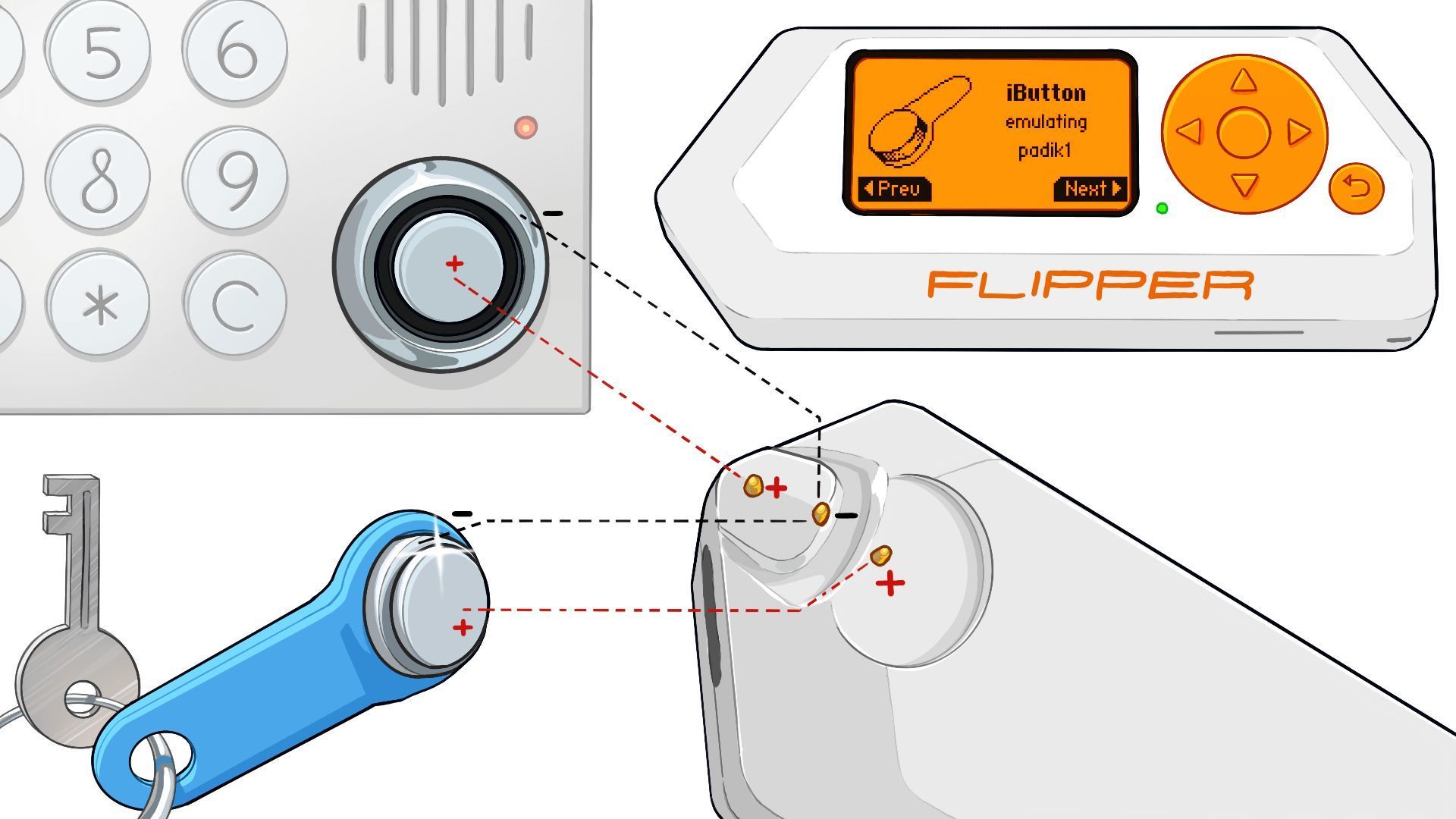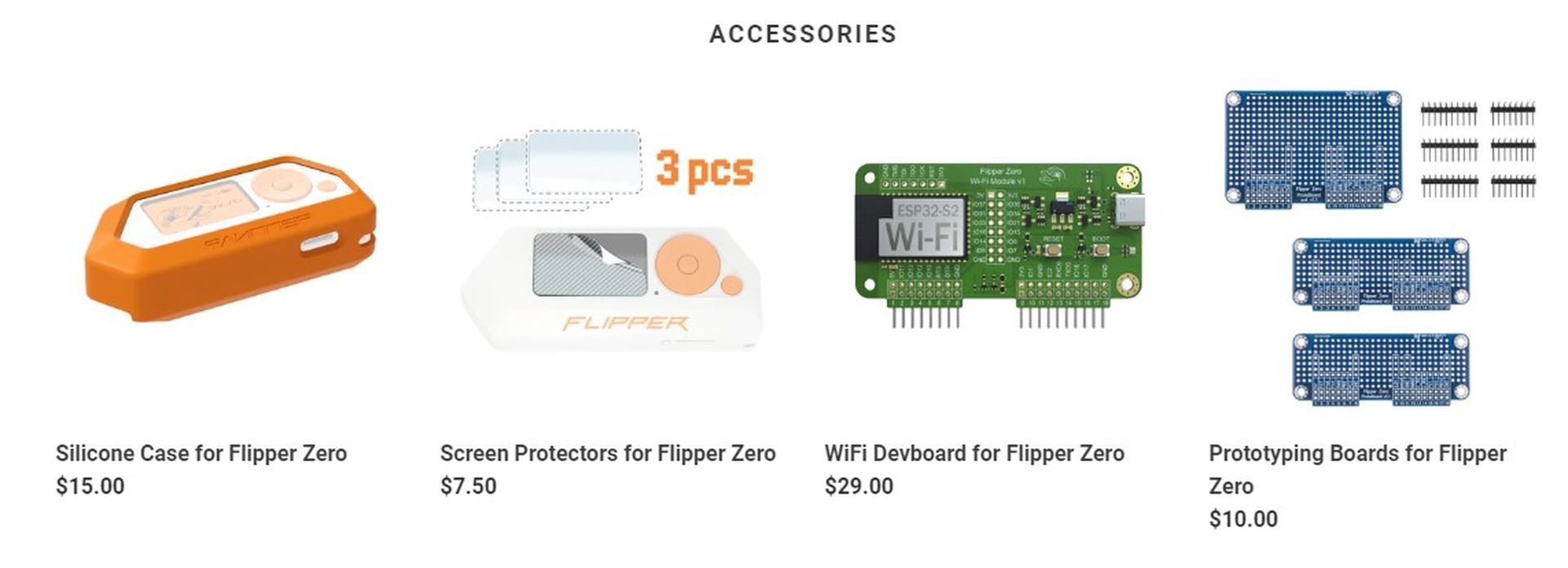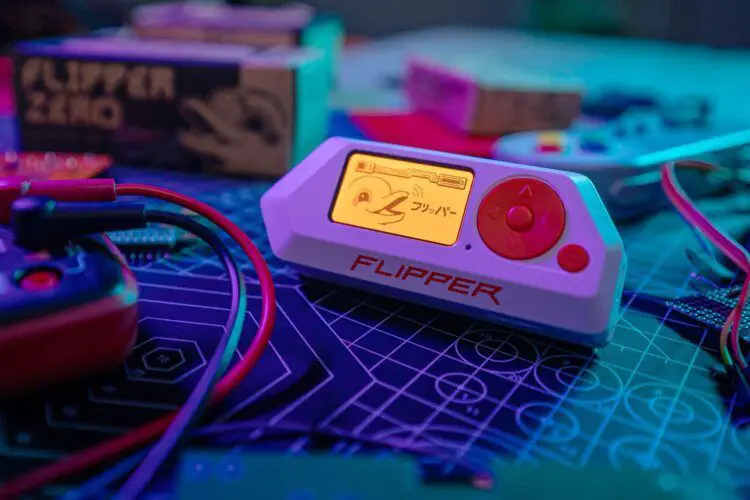In the realm of technology and cybersecurity, a device named Flipper Zero emerged with the chance to reshape the boundaries of exploration and vulnerability assessment. It’s a gadget that bridges the divide between remote control and hacking tool, offering users the chance to unravel the intricacies of electronic devices and, in some instances, gain control over them.
In this article, we’ll delve deep into the newly emerged tool, shedding light on its capabilities, implications, and ethical considerations.

Disclaimer: Before we delve into the depths of Flipper Zero’s capabilities, it’s essential to provide context. This article is solely focused on highlighting Flipper Zero’s features and functionalities, showcasing its potential for cybersecurity exploration. It is imperative to stress that the content within this article does not endorse, support, or recommend any illicit activities or actions. The ethical and lawful utilization of Flipper Zero remains paramount, and any misuse or unlawful actions are the sole responsibility of the user.
What exactly is Flipper Zero?
This question has captured the curiosity of tech enthusiasts, red team hackers, and penetration testers, all fascinated by the device’s potential to expose vulnerabilities lurking within our modern technology. Touted as a cybersecurity X-ray, Flipper Zero is more than just a plaything; it is a versatile tool designed to unveil weaknesses in the digital landscape surrounding us.
At its core, the new tool functions as a remote control, enabling interaction with various electronic devices, granting users the ability to dissect their inner workings and, to some extent, exert control over them. This open-source innovation achieved its funding goal on Kickstarter in 2020, highlighting its appeal to a distinct community.
The buzz surrounding Flipper Zero resonated widely, particularly on platforms like TikTok, where hackers and technology enthusiasts showcased its potential. These videos showcased Flipper Zero’s power to manipulate electronic menus at fast-food establishments, remotely access Tesla charging ports, and even manipulate fuel station displays. The process appeared deceptively simple – point the device, press a button, and witness the intended outcome.
However, it is essential to view these demonstrations critically. While they painted Flipper Zero as a master key to the Internet of Things (IoT), the reality is more nuanced. The device has its limitations, and many of these demonstrations likely involved elaborate planning and setup to achieve the depicted results.

The potential of Flipper Zero
So, what can Flipper Zero truly achieve? It’s not merely a mischievous gadget; it’s a powerful and user-friendly instrument for exploring cybersecurity in the tangible world.
While Flipper Zero may not possess the capability to manipulate every wireless device it encounters, it excels at interpreting signals emitted by diverse wireless devices. This proficiency offers valuable insights into various electronic instruments, although altering gas prices with a single button press remains beyond its reach.
For instance, the device’s capabilities encompass:
Identifying facial recognition signals emitted by iPhones, along with the frequency of these emissions. Reading car tire pressure sensor data from random vehicles. Accessing the body temperature of dogs through embedded animal microchips. Capturing and storing signals from garage door openers. Cloning building entry cards.
Nevertheless, its limitations are evident. What is Flipper Zero’s scope? It cannot modify gas station signs, replicate credit or debit cards, or disable displays at fast-food establishments. Despite these constraints, Flipper Zero still excels at fascinating and practical tasks:
- Analyzing car key signals: Its sub-GHz wireless antenna can detect signals from car key fobs. While recording these signals is possible, playing them back will not unlock modern cars due to the “rolling codes” security feature.
- Universal infrared device management: Equipped with an infrared module, Flipper Zero can be programmed to operate a wide range of devices, from TVs to air conditioners. An intriguing application of this infrared feature is testing the functionality of other infrared remote controls.
- Interaction with NFC technology: In today’s tech-savvy world, Near Field Communication (NFC) is pervasive, and Flipper Zero provides the means to interact with this wireless protocol. While it can read NFC cards, decrypting the card’s encrypted security code remains beyond its capabilities.
Engagement with RFID tags and cards: In tandem with NFC, Flipper Zero can engage with Radio-Frequency Identification (RFID) technology, even reading hotel key cards. Although some RFID cards and tags may have locking mechanisms to prevent overwriting, Flipper Zero can circumvent certain locks, as demonstrated by its ability to unlock cards with valid readers.

Deciphering the Inner Workings of Flipper Zero
Flipper Zero is designed with an array of antennas that enable it to capture, store, replicate, and mimic wireless signals, allowing interaction with a diverse range of signal types:
- NFC: Commonly found in bank cards and building access cards.
- 125kHz RFID: Utilized in older proximity cards and animal microchips.
- Infrared: A frequent component in many remote controls.
- Sub-1 GHz: Employed in garage door remotes and remote keyless systems for communication.
The operation of Flipper Zero is straightforward. To read a wireless signal, users position Flipper Zero near the signal source, select the corresponding program, and initiate the “Read” process. Flipper Zero then stores the signal type in its memory, ready for emulation. It’s important to note that while Flipper Zero can read NFC bank cards, it does not permit users to save and emulate these cards.
The appeal of Flipper Zero’s versatility
The device’s allure lies in its adaptability, demonstrated through three straightforward hacks. Whether unlocking cars via radio signals, controlling TVs through infrared, or generating two-factor authentication tokens, Flipper Zero’s versatility underscores its appeal and potential.

The golden question: Is it legal?
The legality of Flipper Zero raises important questions. A significant incident occurred in September 2022 when U.S. Customs and Border Patrol intercepted a shipment of Flipper Zeros. However, it’s crucial to understand that the device itself is legal, although its potential for unlawful use cannot be dismissed.
The creators of Flipper Zero explicitly discourage using the device to interfere with unauthorized systems or gadgets. The firmware within Flipper Zero prevents users from transmitting frequencies prohibited within their country.
Interestingly, Flipper Zero has faced a ban on Amazon, labeled as a card-skimming device. However, this ban hasn’t diminished its popularity or accessibility, as a third-party Flipper locator application exists. This tool enables enthusiasts to track Flipper restocks by country and vendor, ensuring interested parties can still acquire the device.
Flipper Zero navigates a complex legal landscape, balancing innovative capabilities with responsible and lawful usage. Understanding what it is and how it should be used is crucial to stay within legal boundaries while exploring its potential.

Optimizing Flipper Zero’s firmware
For those curious about firmware updates, the device offers a straightforward process:
- Download and install the Flipper Mobile app for iOS or Android users, or opt for qFlipper for Windows, macOS, or Linux.
- Connect Flipper Zero to your smartphone via Bluetooth or your computer using a USB cable. Upon launching the app, the home screen promptly notifies you of available updates.
For those intrigued by third-party firmware, consider starting with DarkFlipper Unleashed. This option combines the comfort of Flipper Zero’s original firmware with enhanced features. It expands the sub-GHz frequency range by lifting geolocation restrictions and introduces various NFC-related functions, along with entertaining extras like games.
Multiple options exist for performing the update, with the Web Updater method being a recommended choice. Connect your device to your desktop or laptop, or use the iOS/Android app for a seamless process.
The new device has ignited a fascination in the tech world, capturing the attention of hackers and enthusiasts alike. As a device that straddles the line between exploration and ethical responsibility, it invites users to delve into the realm of cybersecurity. Its potential, combined with legal considerations, makes it a remarkable tool in the hands of responsible explorers.
While such technological advancements excite people all around the world for the incoming novelties, so do the concerns about the rapid change and security across multiple fields. On a quite recent note on this matter, check out how China introduced tough measures for facial recognition.
Featured image credit: Flipper





